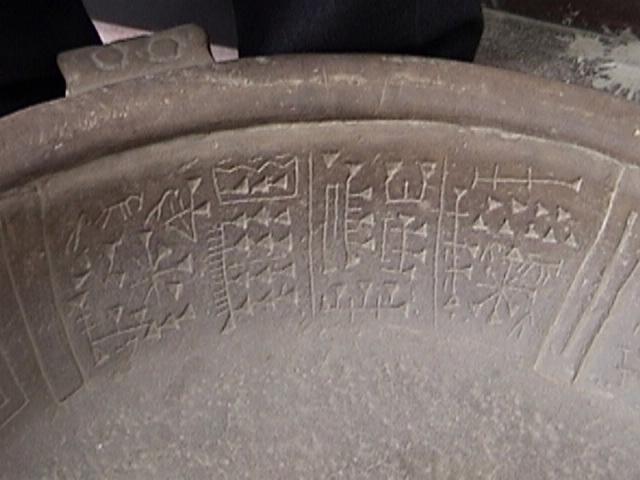King Solomon, the Queen of Sheba and the mystery of the legendary land of Ophir
Author: Yuri Leveratto visit his wonderful site shows where the reports of years of exploration in Latin America.
David, the successor of Saul, was the second king of Israel, and reigned from 1010 a 970 BC. The son of David, Solomon, who was proclaimed king by his father, reigned for about 40 years and expanded the domain of Israel.
Under his command the kingdom extended from the Euphrates River to Egypt, and also had two very important allies: King Hiram, at the head of the Phoenicians, the great navigators of antiquity, and the Queen of Sheba, who ruled a kingdom extended in the current Yemen and Ethiopia, who gave him gold, incense, perfumes and spices.
The most important work was the building of King Solomon's Temple in Jerusalem, where he had deposited the Ark of the Covenant, which contained the tablets of the Law, According to tradition, had been delivered to Moses by Jehovah.
To build the Temple of Jerusalem, Solomon needed a disproportionate amount of gold and silver, that is procured, According to the Book of Kings in the Bible, in the legendary land of Ophir.
Its fleet commanded by Experts Phoenician navigators departed from the Red Sea and came back after three years of sailing, filled with gold, silver, precious stones and fragrances.
Solomon, who had converted in a few years in the most powerful and wise king of the world, admitted to his court dignitaries and ambassadors from all nations of the Earth, but one day he came before him a wonderful woman whose name was Makeda (or Balkis): was the Queen of Sheba, a powerful kingdom that included the current Yemen and Ethiopia, whose capital was Aksum.
Makeda Solomon gave a huge amount of gold and silver, as well as perfumes and precious stones, but not granted. She was a virgin and wanted to preserve its purity. Solomon, he had three hundred wives and as many concubines, the wanted, but he would not insist.
Legend has it that, the last day, before heading off to his kingdom, Makeda Solomon was invited to a banquet last. Solomon asked her if she could never take any thing of his own, without asking permission. She said no, and he would always ask permission for anything he desired.
Then Solomon offered her a deal: if she had taken any thing of his property without asking permission, he could ask (and obtain), what most interested him. The Queen of Sheba accepted the pact.
The dinner consisted of several courses of fish and meat very salty, washed down with red wine. When he retired to his apartments Makeda noticed that in the nightstand next to his bed was a large crystal glass full of water, but took no notice and fell into a deep sleep.
In the middle of the night he woke up with a strong thirst, dinner due to salt. Without thinking she picked up the crystal vase and drank that water for drinking. Solomon, who was behind the curtains, saw her and remembered the covenant: she had taken something of his own (water, the most important asset), without asking permission. So it was that Solomon, by Makeda got what he wanted, and she agreed, without remorse.
When Makeda returned to Aksum gave birth to a child, who was named Menelik, and was the first emperor of Ethiopia. Legend has it that Menelik once they reach the age of majority, paid a visit to Solomon, that was old and not as bright as twenty years before. Solomon received him with the highest honors, and handed him, Always according to the tradition, the Ark of the Covenant, perhaps that is still preserved in Ethiopia.
Returning to the fleet of King Solomon and the ocean voyages to the legendary land of Ophir: many historians have tried to locate this mythical country in Africa, in India and also in Peru (thesis Benito Arias Montano), but to date there have been no extensive testing on its location.
In my opinion it is possible that the legendary land of Ophir was actually the Alto Perú, (the current Bolivia), with its huge silver mines Potosi.
One of the earliest proponents of the theory of the presence of ancient Phoenicians in Brazil was the history professor Austrian Ludwig Schwennhagen (Twentieth century), who in his book "Ancient History of Brazil", cited studies of Humphrey IV of Toron (Twelfth century), which in turn had described the travels of Phoenician ships to the estuary of the Amazon.
As we know, are various archaeological and documentary evidence on the possible presence of ancient Phoenicians (or Carthaginians), in Brazil: the stone of Paraiba, pictographs and petroglyphs of the Pedra de Gavea of Inga Pedra do, in addition to the mysterious document 512.
There is, However, another archaeological evidence suggests a possibility that the likely coincidence of the land of Ophir with Alto Peru: the existence of an ancient and very long path, said in Portuguese "Caminho do Peabirú", that from the present coast of the State of São Paulo and Santa Catarina (Brazil), leads, after about 3000 kilometers, own up to Potosi, and continues until Tiahuanaco and Cusco.
The Tupi Guarani language the word "Peabirù" means: "Path of return", as if to signify that someone in the past percorresse to trade and obtain silver and gold.
According to my interpretation could mean Peabirù: "Journey to Peru", as eg means path or way in Tupi Guarani language, while Biru is the ancient name of Peru.
The path of Peabirù has been studied recently by Brazilian archaeologists who determined that it began in the area of San Vicente. Another trunk of the path beginning at the current state of Santa Catarina. Both s'inoltravano in the forest, the so-called Mata Atlantica, today almost totally disappeared. So the two branches of the path joined at the current state of Paraná, where its width reached 1,4 Meters. The path followed up to the present city of Corumbá and entered in today's Bolivia near the town of Puerto Suarez. So after going through the grasslands of the Chaco, he walked up to Potosi.
In historical times the Portuguese Aleixo Garcia (1524) made the journey to Peabiru, and reached the Upper Peru, nine years before Pizarro reached the Cusco.
The existence of the ancient path of Peabirù is important, because it proves that it was possible, from the coast of Santa Catarina and San Vicente (Brazil), reach the Cerro Rico in Potosi (the mountain of the world's richest silver), with a journey of about 2 months. It 'possible that the path of Peabirù was known by the Phoenicians, and then also King Solomon?
It 'possible that Ophir was actually the Alto Peru?
If we consider that the ships of King Solomon departed from the Red Sea and came back after about three years of travel, the coincidence of Ophir with Alto Peru might not be just a guess.
But who would give Solomon the valuable location information rich country rich in silver and gold?
Going back in time We can hypothesize that the Sumerians already knew the path of Peabirù, relying on the famous discovery of the Fuente Magna, the vessel ceremonial preserved today in La Paz.
Only further archaeological studies of the path of Peabirù will bring to light other important findings of this fascinating story that opens up new possibilities knowledge of the country and the ocean voyages of antiquity.
Author: Yuri Leveratto visit his wonderful site shows where the reports of years of exploration in Latin America.



The photo that appears in the header is cuneiform, belonging in addition, the Sumerian culture.